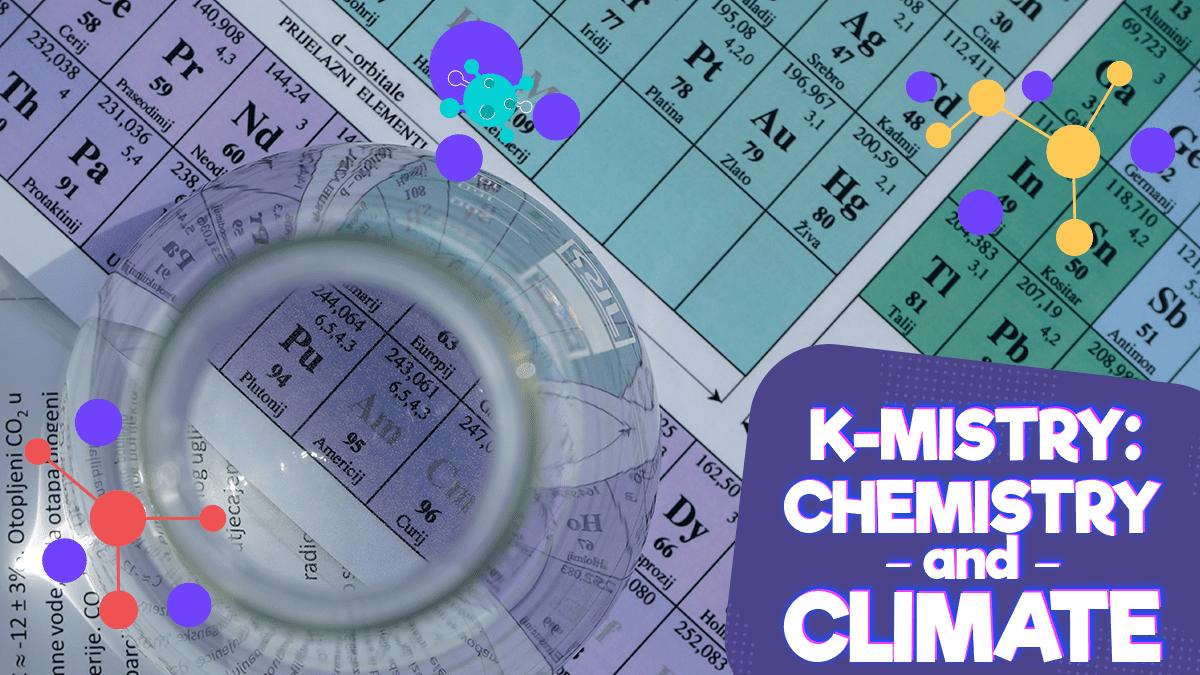Air is a mixture of gases and particles. Most of those gases aren’t harmful – like nitrogen and oxygen that we need to live, although some like sulphur dioxide are. And sometimes harmless gases react with each other and create pollutants like ozone.
Air pollutants can be solid particles, liquid or gas, and come from both natural and man-made sources. The biggest contributors to air pollution are currently fossil fuel power stations, road transport, industry and gas heating in our homes.
Whilst it’s important to measure the level and type of pollutants to make sure we’re meeting our targets for air quality, monitoring can also help us find links between things – like whether certain particles in the air result in heart and lung problems.
Taking atmospheric measurements is nothing new. It’s something scientists have been doing since the 1950s. Frequently, they’re measuring carbon dioxide and other gases that contain carbon in the air.
Carbon 12 is the most common isotope of carbon. In fact, 99% of all carbon is this type. For millions of years, plants have absorbed Carbon 12 and so it’s abundant in our fossil fuels. So when we detect it in the air, we know it’s come from burning fossil fuels. And THAT means pollution.
Carbon 13 is slightly different from carbon-12 – it has an extra neutron in its nucleus and each atom weighs slightly more. Plants don’t like Carbon 13 as much and so it isn’t that common in fossil fuels. Therefore, when its detected in the air, we know it’s come from somewhere else.
There are around 300 air quality monitoring sites across the UK measuring a variety of pollutants – from ozone, nitrogen oxide and sulphur dioxide to carbon monoxide and particulates. There’s a government website you can use to see if there’s one near you.
These mini labs can detect what’s in the atmosphere by observing chemical reactions in air samples.
Whilst levels of pollution in the air can tell us about climate change here and now, scientists can find out about climate change in the past – even thousands of years ago – by going not up, but DOWN.
We can find clues about our planet’s climate history by studying coral reefs, digging through the sediment in our ocean floors and by drilling into glaciers and ice sheets. Ice core samples can hold a record of what our planet was like in the past and tell us what was happening up to 800,000 years ago. From pollen and atmospheric residues trapped in the ice, to chemical changes which can tell us about the temperature, this information can be studied and used to help us understand climate change today.
Here’s a cool experiment where you can see how pollution enters the food chain:
Equipment
- A glass
- Tap water
- Red or blue food coloring.
- A knife (get your parents or teacher to help you use the knife)
- A stick of fresh celery with the leaves still on it
Method
- Fill the glass with tap water.
- Add two or three drops of food colouring. Notice how it spreads through the water. Pollution spreads through water just like the food colouring does.
- Wash the piece of celery. Leave the leaves on.
- Being very careful, use the knife (or get your parents or teacher to do this) and cut off the bottom of the celery.
- Put the celery in the glass filled with coloured water.
- Let the celery stalk sit there for at least three or four hours; you can even leave it overnight.
- When the time has passed, take the celery stalk out of the water.
- Use the knife (remember to get help from your parents or teacher) and cut a slice off the bottom of the stalk.
- Do this several times.
Created with the support of a Royal Society of Chemistry Outreach Fund grant








